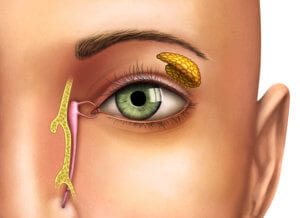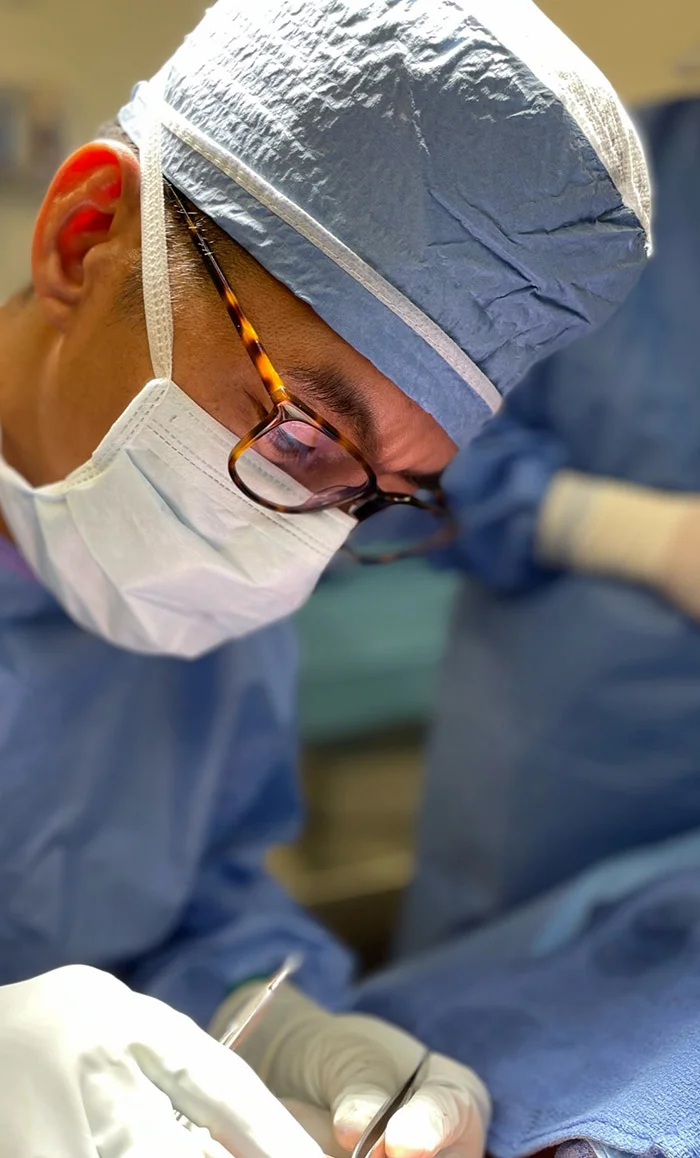Epiphora Treatment
One surgical treatment for excessive tearing is DCR, a sophisticated surgical procedure used to create proper drainage of tears. There are two methods to perform it. In an external DCR, an incision is made between the eye of the nose, the lacrimal sac is found, and an opening to the lacrimal sac is created so tears can drain into the nasal cavity, completely bypassing an obstructed lacrimal duct. For many surgeons and patients, endoscopic DCR is the preferred epiphora treatment because it’s less invasive, has a better success rate, and has less visible scarring.In an endoscopic DCR, an ophthalmologist or otorhinolaryngologist administers a decongestant and inserts anesthesia soaked gauze into the nose to numb the area and constrict blood vessels. An endoscope is inserted into the nose to help with visualization, while bone is removed from over the lacrimal sac to create an opening. This lets tears drain directly into the nasal cavity, bypassing the duct and reducing epiphora.
Causes of Epiphora (Eye Tearing)
Irritation
Infective conjunctivitis, an infection of the tissue that covers the front of the eye, can cause irritation that can lead to epiphora.
Dacryocystitis
Infections are a common cause of epiphora, and recurring infections in the lacrimal sac is called dacryocystitis. This can be treated by flushing the infection out of the sac and into the nasolacrimal duct. It can also be treated with a regimen of antibiotics, and if this proves ineffective, a procedure called dacryocystorhinostomy (DCR) might be needed to to drain the infection out.
Trichiasis
This is actually a fairly common eye condition where the eyelashes start to grow inwards into the eyelid, causing irritation, leading to epiphora. Trichiasis can be treated by an ophthalmologist who can surgically remove any inward-growing eyelashes.
Ectropin
This condition is when the eyelids start to turn outward, which causes the eyelashes and skin to rub against other, causing irritation that leads to excessive tearing. In this case, an ophthalmologist can treat ectropion by surgically tightening the tendon that holds the eyelid in place.






